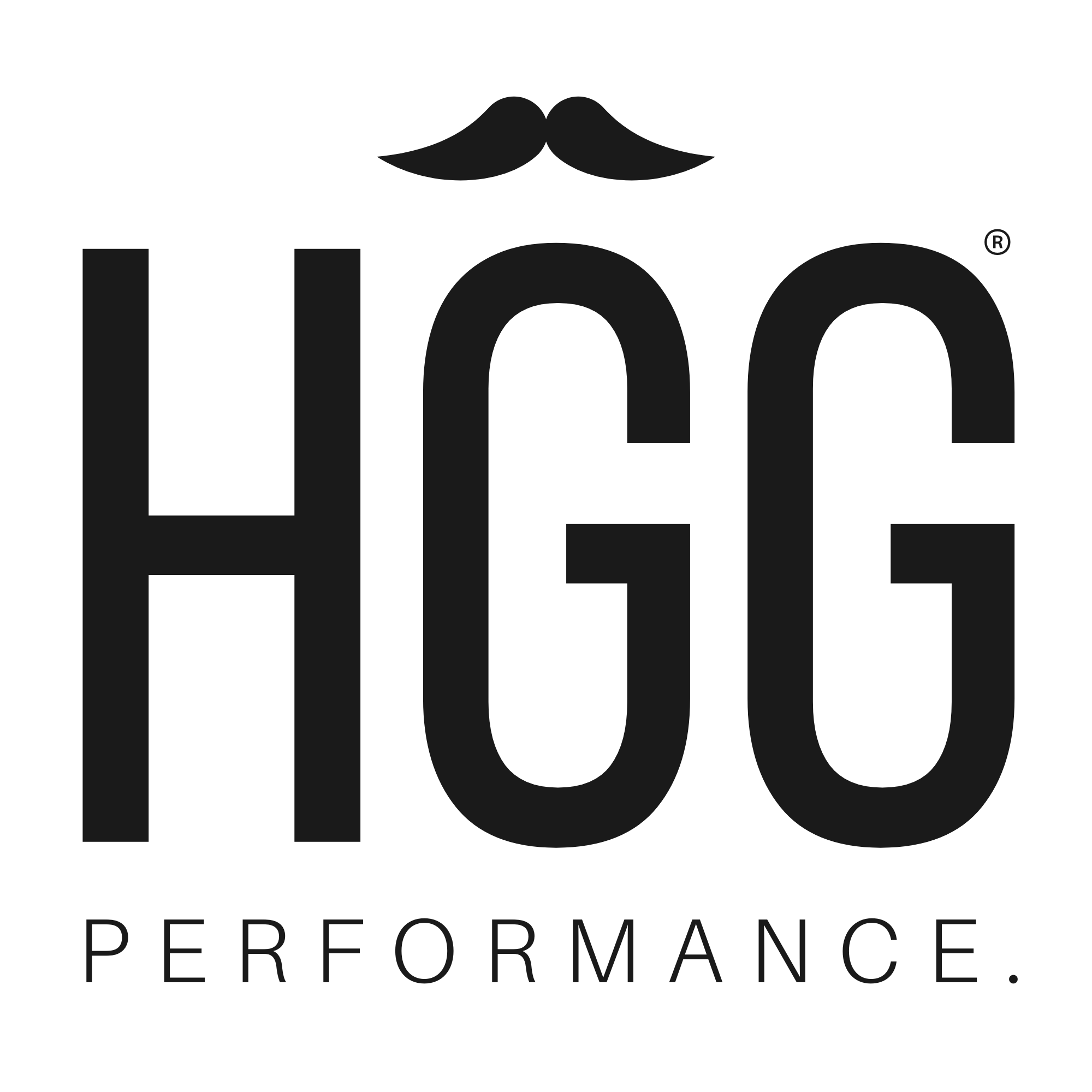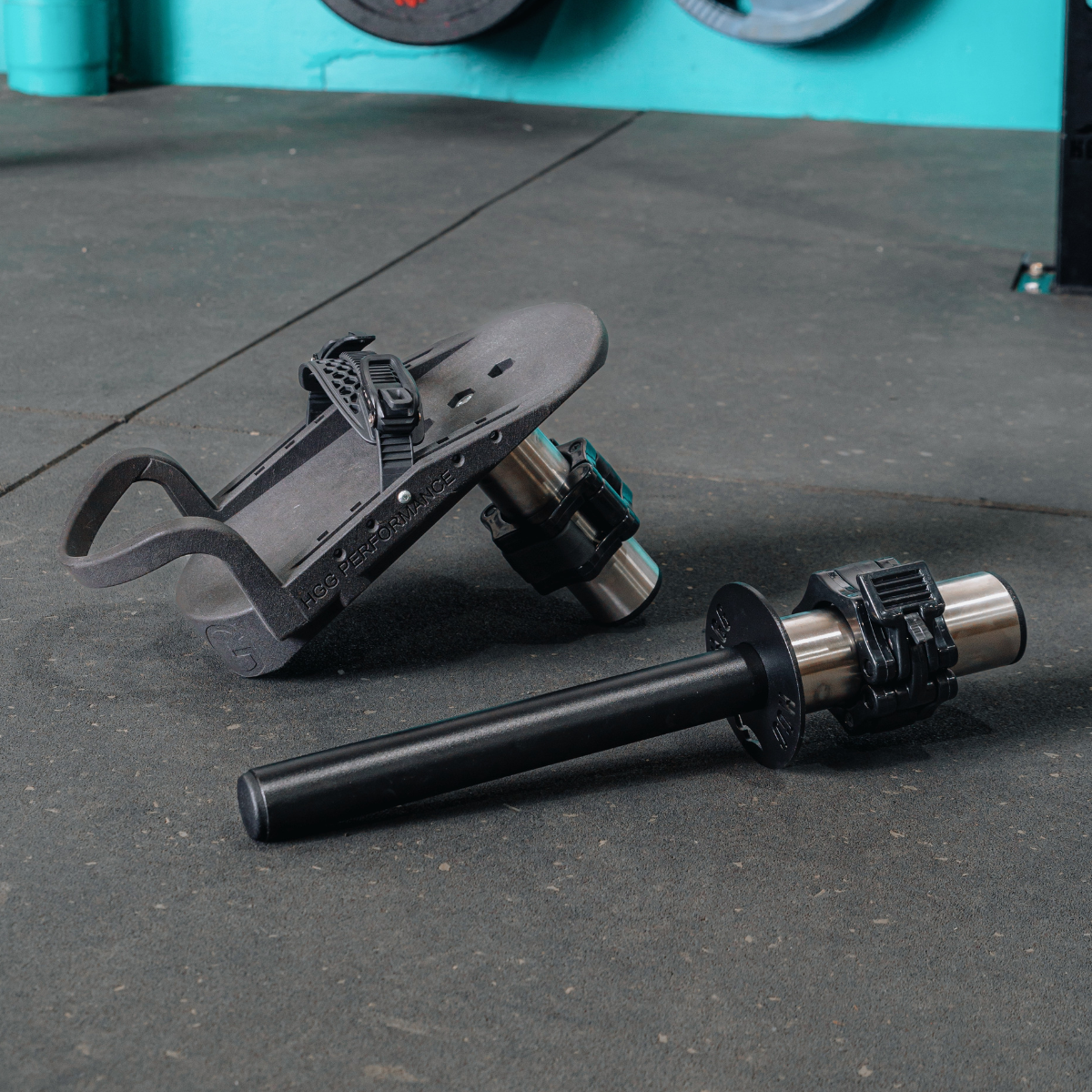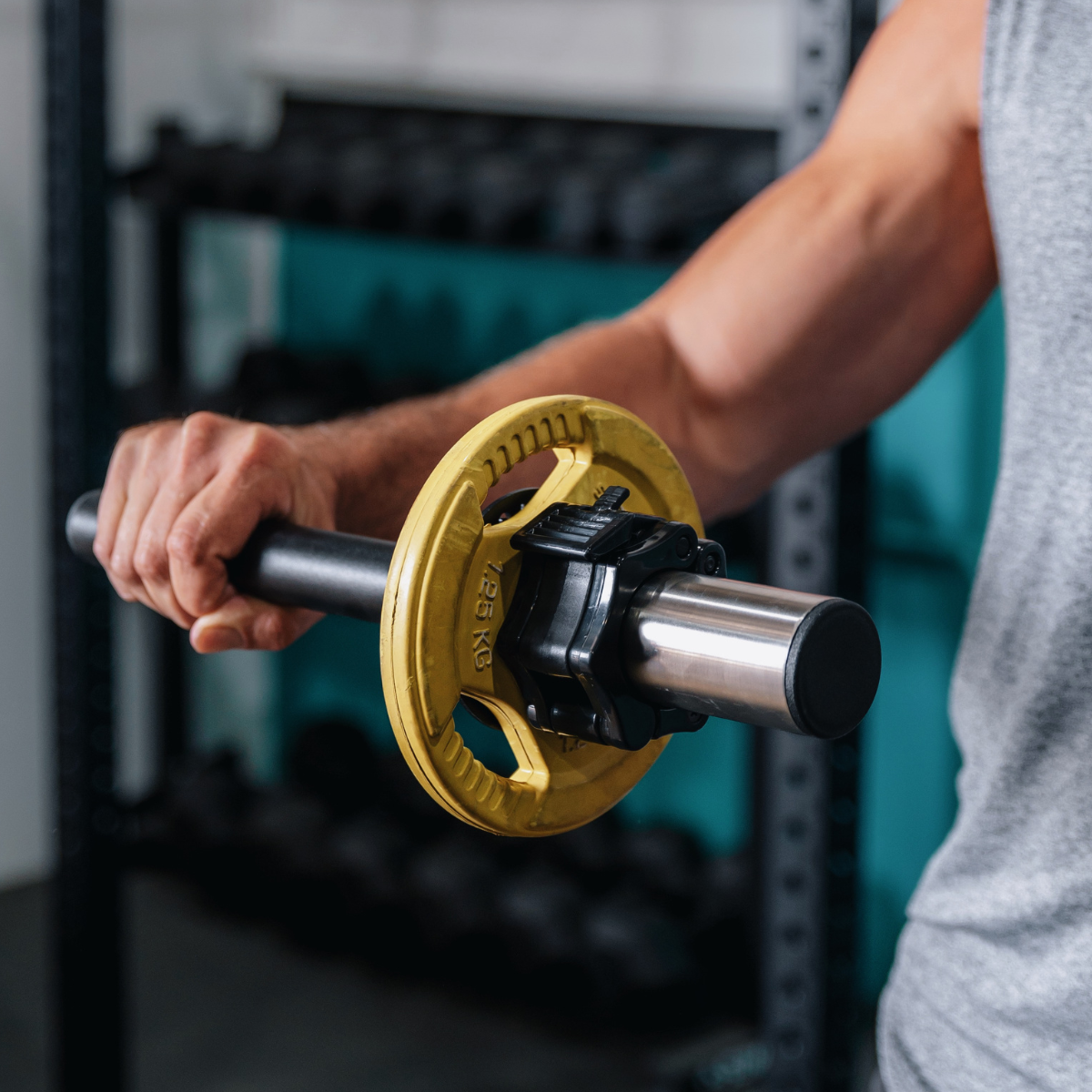We are the original creators of the world famous Nordic Bar™ - the nordic solution you have been searching for!
The Nordic Bar™ is used for nordic hamstring curls and holds the ankles in place while kneeling on the ground (or a padded bench for comfort), and leaning forward from the knee to extend the hamstring muscles.
ABOUT THE NORDIC BAR™
The Nordic Bar™ is a purpose designed padded bar that has a new more versatile attachment system to aid in securing it in a number of positions for specific exercises aimed at improving the strength and conditioning and also the physical therapy and rehabilitation of the hamstring muscles.
The Nordic Bar™ is designed to primarily strengthen the hamstring group of muscles located at the rear of the thigh (specifically involved in the action of flexion of the knee joint). It should be noted that the hamstring group of muscles are bi axial in that they have their origins and insertions crossing over two joints, The origins being on the pelvis at the ischial tuberosity and insertions being on both the tibia and fibula. As its origins and insertions cross two joints the hamstring group of muscles are involved in two different body movements. These muscles are involved in hip extension and also knee flexion and it’s by the use of other muscles in combination in various synergist and fixator roles that these two different functions can be completed at the same time. The Nordic Bar™ is primarily designed to assist in completing what are called Nordic Hamstring Curls and Extensions. The main muscle groups involved are the biceps femoris which sits laterally at the rear of the thigh, the semitendinosus which sit more medially and superficially and the semimembranosus which sits medially and deep to the semitendinosus. The Nordic Bar™ is used to hold both ankles in a fixed position while the upper leg, trunk and upper body are raised and lowered with the fulcrum of movement centred at the knee joint.
The Nordic Curl and Extension is designed to isolate the hip from the exercise so that both the flexion of the knee joint is activated and its extension under control is then allowed. Flexion is described as the shortening of the muscle under tension drawing the insertion point of the muscle closer to the origin (also termed concentric in exercise terminology). The action involved in this exercise is the lifting of the trunk and upper body off the floor while the knees, lower leg, ankle and foot remain stationary. The extension of the knee joint while under tension is controlled by lowering the upper body slowly back to the floor. This extension is described as the muscle lengthening under tension as the origin and insertion of the muscle groups become further apart (in exercise terms this is called eccentric movement).
WHY YOU NEED THE NORDIC BAR™
Flexion of the knee joint occurs in many exercises in the gymnasium and on the sports field because of the postural involvement of the legs in so many other ways. The main exercises dedicated to flexion and extension of the knee occurs at either seated hamstring curl machines which limit the range of movement due to the position of the seat or pronated (facing down) on a bench doing hamstring curls, (pulling the ankle back to the buttocks). Any lack of attention given to hamstring exercises is likely to lead to long lasting injuries particularly in those who take part in sports that involve running and sudden changes and increases in pace. Another cause of injury and something to be aware of when doing hamstring exercises is the necessity to warm up thoroughly before starting any hamstring specific exercises, as they are particularly susceptible to both minor and major tears when the muscles are cold.
Conventional methods of exercise for the Hamstring group typically involve movement of the lower limb rather than the trunk and upper body as used in Nordic Curls. By training this way it has been shown that the eccentric loading of the hamstrings combined with the greater range of movement in the Nordic Curl/Extensions exercise both promotes larger muscle growth as well as increased sprinting speed.
Because of its main purpose being to increase both muscle mass and sprinting speed, plus the use of upper body weight rather than free weights or machine stacked weights The Nordic Bar™ has little application with the elderly unless specific hypertrophy after an injury or operation is being dealt with under medical guidance. Where the elderly or those unfamiliar with this exercise make use of the Nordic Bar™, we recommend the use of a resistance band to reduce the bodyweight loading on the knees initially.
The adjustable Nordic Bar™easily fastens on to any frame, gym bar, post or immovable solid object measuring up to 90mm in width. The 48mm round pipe that holds the ankles in place gives a sturdy and reliable support on the achilles and lower leg. The Nordic Bar™ is made from Australian laser cut quality steel and has a matte black finish
If you walk, run, sprint, jump or want to maintain longevity in your leg muscles for the rest of your life, then this piece of equipment is for you.
DID YOU KNOW?
Anyone that is physically active at an intermediate to high level can benefit from implementing The Nordic Bar™ into their training and rehabilitation routines. Not only will it aid in strengthening the hamstrings to avoid fatigue and overload injuries common to them, it will also improve sudden acceleration and change of speed in athletes. It will also help improve the stability of the knee and reduce the risk of hyperextension injuries due to over development of the quadriceps muscles (anterior thigh muscles).
For athletes that require the ability to go from a stationary to high running speed situation or suddenly increase speed, it is important for the hamstrings to be able to absorb the high forces that will be transmitted through them without tearing. Due to the sudden high speed of sprinting or game play in many other sports for both males and females where sudden rapid acceleration is required to be performed. This requires sufficient strength of the stabilising muscles that brace the knee joint at the maximal range of motion of the flexion and extension movement planes. Athletes that use The Nordic Bar™ will be able to strengthen the dynamic movement planes of the knee to ensure prevention of injury and also rehabilitation of knee injuries are catered for. Furthermore, they will also be able to use the Nordic Bar™ to stretch the musculature and ligaments surrounding the knee to work through any scar tissue or limited movement ranges that may be present from any previous injuries or lack of attention given to specific movements.
The physical therapy and rehabilitation sector will benefit from the utilisation of the Nordic Bar™ with rehabilitating patients who have experienced a knee injury or undergone knee surgery. Atrophy occurs due to lack of stimulation and mobilisation of the surrounding stabilising musculature of the knee joint. Although it is known that strengthening the muscles of both the thigh and lower leg, increasing the range of motion of the planes of movement of the knee joint can also be beneficial. The Nordic Bar™ will serve to aid in the progression of strengthening and increasing the range of movement of the knee joint, so long as it is performed in a pain-free and comfortable state.
SHOP THE NORDIC BAR™ HERE --->
Always seek the guidance of your doctor or other qualified health professional with any questions you may have regarding your health or a medical condition. Never disregard the advice of a medical professional, or delay in seeking it because of something you have read on this website.
[1] Nordin, M., & Frankel, V. H. (Eds.). (2001). Basic biomechanics of the musculoskeletal system. Lippincott Williams & Wilkins.
[2] Mann, R. A., & Hagy, J. (1980). Biomechanics of walking, running, and sprinting. The American journal of sports medicine, 8(5), 345-350.
[3] Nielsen, R. O., Buist, I., Sørensen, H., Lind, M., & Rasmussen, S. (2012). Training errors and running related injuries: a systematic review. International journal of sports physical therapy, 7(1), 58.
[4] Monod, H. (1985). Contractility of muscle during prolonged static and repetitive dynamic activity. Ergonomics, 28(1), 81-89.
[5] Arendt, E. A., Agel, J., & Dick, R. (1999). Anterior cruciate ligament injury patterns among collegiate men and women. Journal of athletic training, 34(2), 86.
[6] Gray, J., Taunton, J. E., McKenzie, D. C., Clement, D. B., McConkey, J. P., & Davidson, R. G. (1985). A survey of injuries to the anterior cruciate ligament of the knee in female basketball players. International journal of sports medicine, 6(06), 314-316.
[7] Powell, J. W., & Barber-Foss, K. D. (1999). Injury patterns in selected high school sports: a review of the 1995-1997 seasons. Journal of athletic training, 34(3), 277.
[8] Dufek, J. S., & Bates, B. T. (1991). Biomechanical factors associated with injury during landing in jump sports. Sports medicine, 12(5), 326-337.
[9] Noyes, F. R., Mooar, P. A., Matthews, D. S., & Butler, D. L. (1983). The symptomatic anterior cruciate-deficient knee. Part I: the long-term functional disability in athletically active individuals. JBJS, 65(2), 154-162.
[10] Shelton, W. R., Barrett, G. R., & Dukes, A. (1997). Early season anterior cruciate ligament tears: a treatment dilemma. The American journal of sports medicine, 25(5), 656-658.
[11] Fink, C., Hoser, C., Hackl, W., Navarro, R. A., & Benedetto, K. P. (2001). Long-term outcome of operative or nonoperative treatment of anterior cruciate ligament rupture-Is sports activity a determining variable?. International journal of sports medicine, 22(04), 304-309.
[12] Myklebust, G., & Bahr, R. (2005). Return to play guidelines after anterior cruciate ligament surgery. British journal of sports medicine, 39(3), 127-131.
[13] Devita, P. A. U. L., & Skelly, W. A. (1992). Effect of landing stiffness on joint kinetics and energetics in the lower extremity. Med Sci Sports Exerc, 24(1), 108-115.
[14] Mann, R. A., & Hagy, J. (1980). Biomechanics of walking, running, and sprinting. The American journal of sports medicine, 8(5), 345-350.
[15] Nilsson, J., Thorstensson, A., & Halbertsma, J. N. (1985). Changes in leg movements and muscle activity with speed of locomotion and mode of progression in humans. Acta Physiologica Scandinavica, 123(4), 457-475.
[16] Nielsen, R. O., Buist, I., Sørensen, H., Lind, M., & Rasmussen, S. (2012). Training errors and running related injuries: a systematic review. International journal of sports physical therapy, 7(1), 58.
[17] Monod, H. (1985). Contractility of muscle during prolonged static and repetitive dynamic activity. Ergonomics, 28(1), 81-89.
[18] Landry, M., & Zebas, C. J. (1985). Biomechanical principles in common running injuries. Journal of the American Podiatric Medical Association, 75(1), 48-52.
[19] Taunton, J. E., McKenzie, D. C., & Clement, D. B. (1988). The role of biomechanics in the epidemiology of injuries. Sports medicine, 6(2), 107-120.










Leave a comment
All comments are moderated before being published.
This site is protected by reCAPTCHA and the Google Privacy Policy and Terms of Service apply.